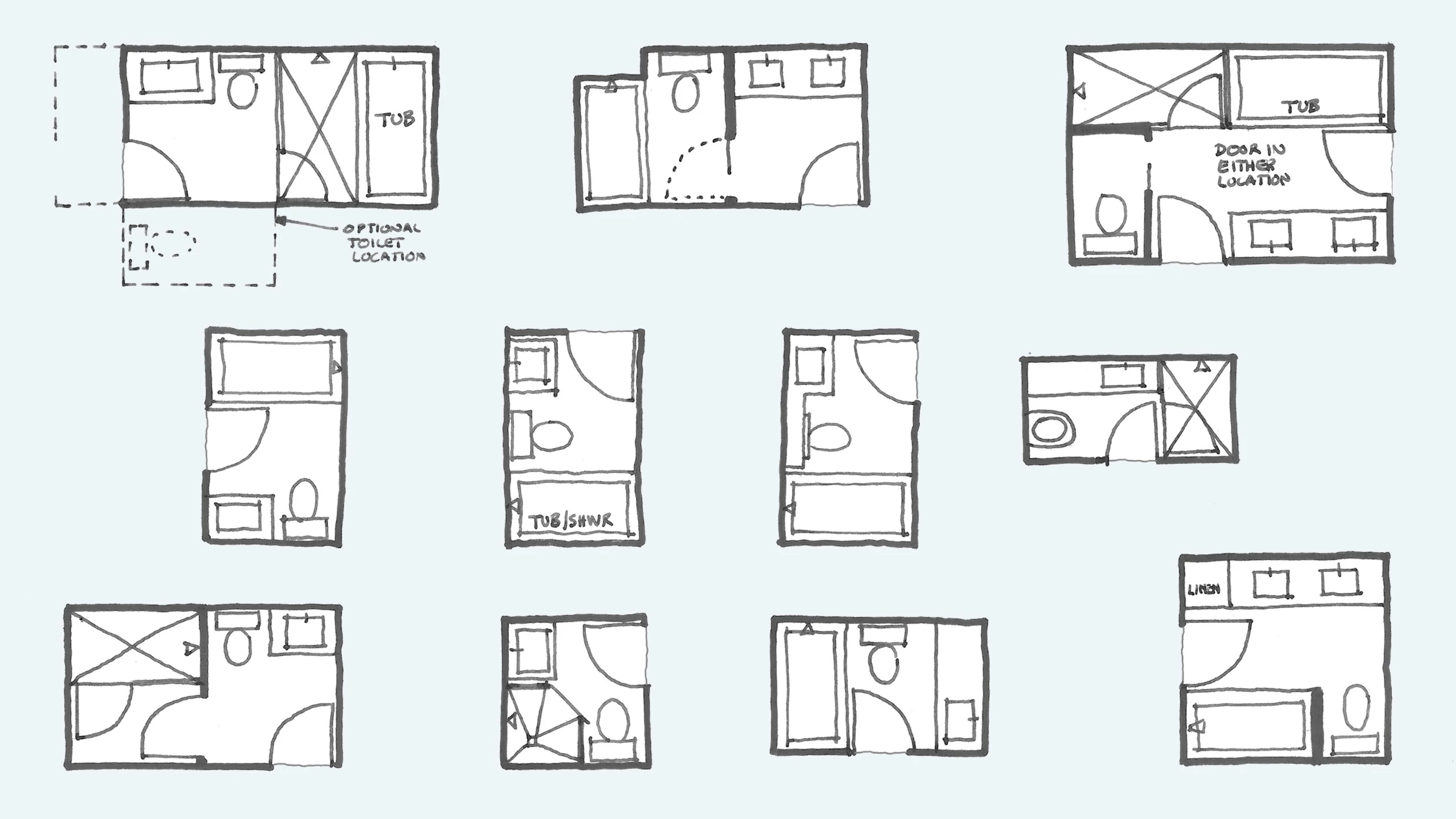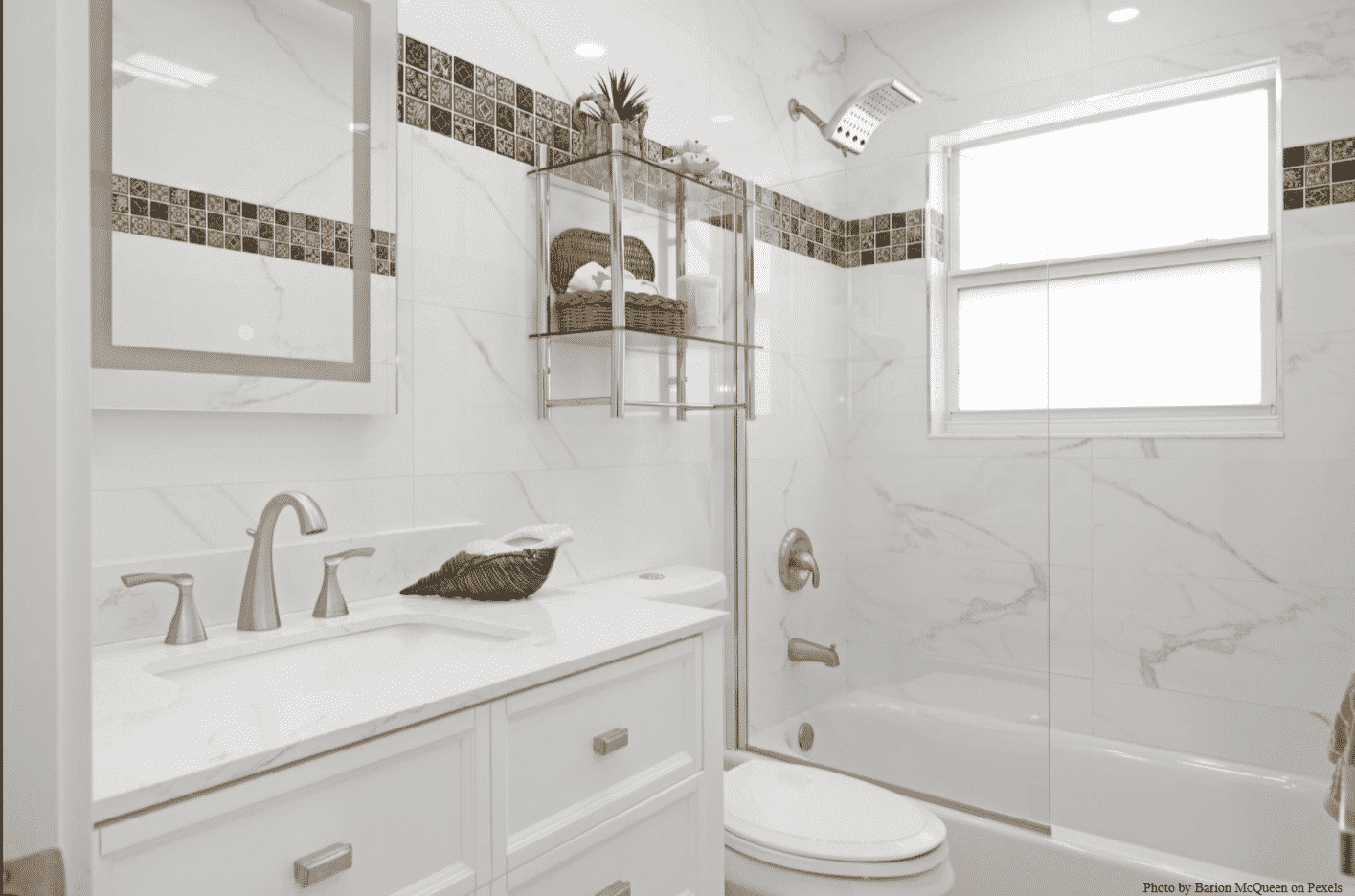Maximizing Space in a Small Basement Bathroom

Designing a functional and visually appealing bathroom in a small basement space can be challenging, but it’s definitely achievable. With smart planning and design choices, you can create a comfortable and stylish bathroom that maximizes every inch of available space.
Maximizing Vertical Space
Utilizing vertical space is crucial in a small basement bathroom. By incorporating wall-mounted fixtures, floating shelves, and a mirrored medicine cabinet, you can create a sense of openness and minimize clutter.
- Wall-mounted fixtures: Opting for wall-mounted sinks, toilets, and towel racks frees up valuable floor space, creating a more spacious feel. A wall-mounted sink with a narrow pedestal or a floating vanity can be particularly effective.
- Floating shelves: Floating shelves offer a practical and visually appealing way to store toiletries, towels, and decorative items without taking up floor space. You can install them above the toilet, around the sink, or even on the walls of the shower.
- Mirrored medicine cabinet: A mirrored medicine cabinet not only provides storage for toiletries but also reflects light, making the bathroom feel larger and brighter.
Creating an Illusion of Larger Space
Visual tricks can go a long way in making a small bathroom feel more spacious. By using light colors, reflective surfaces, and strategically placed mirrors, you can create an illusion of larger space.
- Light colors: Using light colors, such as white, cream, or light gray, on the walls and ceiling will reflect light, making the bathroom feel more airy and spacious.
- Reflective surfaces: Incorporate reflective surfaces, such as mirrors, glossy tiles, and chrome fixtures, to bounce light around the room and create a sense of depth.
- Strategically placed mirrors: Placing mirrors opposite windows or light sources will amplify natural light, making the bathroom feel brighter and larger. Consider a large mirror above the sink or a smaller mirror on the wall opposite the toilet.
Small Basement Bathroom Layout
Here’s a suggested layout for a small basement bathroom that incorporates a shower, toilet, and vanity, while maximizing space and functionality:
- Shower: Install a small, walk-in shower stall in a corner of the bathroom. This will maximize floor space and provide a comfortable showering experience. Consider using a glass shower door to create a sense of openness.
- Toilet: Place the toilet next to the shower, creating a compact and efficient layout. Choose a toilet with a smaller footprint, such as a wall-mounted toilet, to save space.
- Vanity: Position the vanity opposite the shower and toilet. A floating vanity or a wall-mounted sink with a narrow pedestal can be particularly space-saving. Choose a mirror with a narrow frame or a mirrored medicine cabinet to maximize space.
Creating a Stylish and Functional Design: Small Basement Bathroom Ideas
Transforming a basement bathroom into a stylish and functional space requires a thoughtful approach to design. By creating a cohesive aesthetic, incorporating natural elements, and strategically using lighting, you can create a welcoming and spa-like atmosphere.
Choosing a Cohesive Color Palette and Design Theme
A well-chosen color palette and design theme can unify the entire basement bathroom. The theme should complement the overall basement aesthetic, creating a seamless transition between spaces.
- Consider using a neutral color palette, such as grays, whites, or creams, as a foundation for the bathroom. These colors provide a clean and airy feel, making the space appear larger.
- Add pops of color with towels, rugs, and accessories. Bold colors can create a focal point, while softer tones add a sense of calm.
- Select a design theme that reflects your personal style. Industrial, farmhouse, modern, or traditional themes can all be adapted to a basement bathroom.
Incorporating Natural Elements
Natural elements bring a sense of tranquility and warmth to a basement bathroom.
- Wood accents, such as a vanity countertop or a floating shelf, add warmth and texture to the space.
- Stone tiles, especially those with a natural finish, can create a spa-like ambiance.
- Plants are a great way to introduce life and color. Choose low-maintenance plants that thrive in low-light conditions, such as snake plants or peace lilies.
Designing with Lighting
Lighting plays a crucial role in creating a welcoming and functional basement bathroom.
- A combination of natural and artificial light is ideal. Maximize natural light by installing a window, if possible, or by using a skylight.
- Use a combination of overhead lighting and task lighting. Overhead lighting provides general illumination, while task lighting, such as sconces or vanity lights, illuminates specific areas, such as the mirror or sink.
- Choose light bulbs that emit a warm, inviting glow.
Stylish and Functional Storage Solutions
Maximizing storage is essential in a small basement bathroom.
- Utilize built-in shelves, especially in the shower or above the toilet, to store toiletries and other essentials.
- Baskets and decorative containers can be used to store towels, linens, and other items.
- A small cabinet or vanity with drawers can provide additional storage space.
Essential Features and Considerations

A small basement bathroom presents unique challenges, but with careful planning and attention to detail, you can create a space that is both functional and stylish. This section focuses on essential features and considerations for ensuring your basement bathroom is safe, comfortable, and meets your needs.
Ventilation, Small basement bathroom ideas
Adequate ventilation is crucial in a basement bathroom to prevent moisture buildup and mildew growth. Moisture from showers, baths, and even simple washing can accumulate in a basement environment, leading to unpleasant odors, structural damage, and health problems.
A well-ventilated basement bathroom helps maintain a healthy and comfortable environment.
- Install an exhaust fan with a high-capacity motor to effectively remove moisture from the air.
- Consider using a humidity sensor to automatically activate the exhaust fan when needed.
- Ensure the fan vents to the exterior of the house, not into the attic or other enclosed spaces.
- Regularly clean the exhaust fan to maintain its efficiency.
Energy-Efficient Appliances
Choosing energy-efficient appliances can help minimize water usage and utility costs in your basement bathroom. These appliances not only save money but also contribute to environmental sustainability.
- Low-flow showerheads can reduce water consumption by up to 50% without sacrificing water pressure. They are typically rated in gallons per minute (GPM), with lower GPM ratings indicating greater water efficiency.
- Water-saving toilets use less water per flush, typically around 1.28 gallons per flush or less. These toilets are often labeled with the WaterSense certification, which indicates they meet EPA standards for water efficiency.
Waterproof Materials
Using waterproof materials is essential in a basement bathroom to prevent water damage. Basement bathrooms are susceptible to leaks and spills, so it’s important to use materials that can withstand moisture and prevent water from seeping into the surrounding structure.
- Tile is a popular choice for basement bathroom floors and walls because it is durable, waterproof, and easy to clean.
- Grout should be waterproof and mildew-resistant to prevent moisture penetration and mold growth.
- Waterproof paint is essential for walls and ceilings to protect them from moisture damage.
- Consider using a waterproof sealant around the bathtub or shower to prevent water from leaking behind the walls.
Essential Features and Considerations Checklist
A small basement bathroom should be designed with safety and functionality in mind. Here is a checklist of essential features and considerations to ensure your bathroom is both practical and comfortable:
- Lighting: Adequate lighting is essential for safety and comfort. Consider using a combination of overhead lighting and task lighting, such as a vanity mirror with built-in lights, to provide sufficient illumination for grooming and other tasks.
- Storage: Maximize space with well-designed storage solutions. Consider using a combination of cabinets, shelves, and baskets to keep your bathroom organized and clutter-free.
- Safety Features: Include safety features like grab bars near the bathtub or shower, a non-slip floor, and a well-lit path to prevent falls.
- Accessibility: If you anticipate needing to use the bathroom in the future with limited mobility, consider designing it to be accessible. This could include a walk-in shower, a wider doorway, and a raised toilet seat.
- Heating: Ensure the bathroom is adequately heated, especially during colder months. Consider using a space heater or a dedicated heating system to maintain a comfortable temperature.
